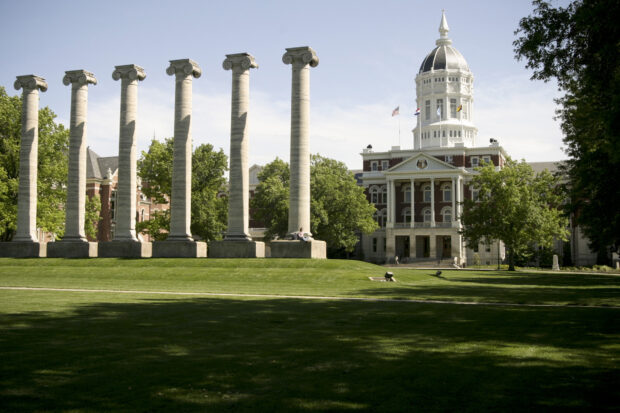HOME | ABOUT US | MEDIA KIT | CONTACT US | INQUIRE
HOME | ABOUT US | MEDIA KIT | CONTACT US | INQUIRE
In a time of national economic peril, Missouri is poised to push forward.

When more than 313,400 young Missourians and imports from out of state had to make a selection for their college education, the choices weren’t always easy:
Public four-year college? The state has 13 of them anchored by the four-campus University of Missouri system. For nearly 137,000 of those students, that was the way to go for the fall semester of 2021.
Public two-year college? With their programs’ focus on training for jobs that might offer immediate placement, more than 74,000 students took this path through 14 institutions.
Private four-year college? Two dozen independent liberal arts colleges, often in small towns dotting the state, attracted slightly more than 102,000 students.
All told, more than 313,000 members, a workforce in waiting, took college courses in the Show-Me State last fall, a figure that doesn’t include enrollments from 11 specialized institutions, producing thousands of new doctors, nurses, artists, IT workers, and others.
In the spring of 2021, the state’s private and public four-year and two-year schools issued more than 92,000 diplomas or certifications. And good thing, too: the nation is caught in the vise of a job market that is strapping employers desperate for skilled, motivated workers.
The fact is, there are more jobs available than there are college graduates to fill them. Colleges are straining to do just that, even as demographic trends continue to shrink the pool of candidates. In the five-year period between 2016 and 2021, overall college enrollment fell 16.6 percent in Missouri—20 percent or more at the private and two-year public colleges. That made the four-year public institutions the bright spot, with a decline of 14.5 percent.
That, of course, mirrors national trends, but with only about 30 percent of Missouri’s workforce holding college degrees, much work remains if the state is ever to meet the goal of 60 percent outlined by former President Obama in 2009.
Clearly, though, the physical assets are in place to begin that process. Among the institutions of higher education within Missouri, you will find:
• The four-campus University of Missouri system is anchored by the main campus in Columbia, with regional campuses in Kansas City and St. Louis, and the science and technology-focused campus in Rolla. Combined, they had nearly 70,000 students enrolled last fall. Systemwide, that broke a string of broader enrollment losses posted by other institutions.
• State-funded universities are not limited to the MU system; nine other four-year state-supported public colleges fill regional gaps, with the biggest of those in Springfield, where nearly 30,000 students at Missouri State University made it the state’s second-largest by enrollment. Swimming against a national demographic tide, the University of Central Missouri in Warrensburg saw its enrollment turn back up, surpassing 10,000, while Southeast Missouri State University in Cape Girardeau (9,838 students), Northwest Missouri State University in Maryville (7,868), Missouri Western in St. Joseph (4,386), Missouri Southern State University in Joplin (4,346), and Truman State University in Kirksville (4,225) saw slight declines.
• Liberal-arts colleges, bearing the brunt of enrollment declines, nonetheless topped 102,000 students last fall. The crown jewel among those: Washington University in St. Louis, a world-recognized research university that has sharply broken from enrollment trends with nearly 17,000 last fall—up 12.5 percent since 2016.
• And 14 community colleges—enrolling more than 75,000 students last fall—fill a larger role in immediate workforce training, usually working in concert with employers to identify skills needed and emerging knowledge sets as business conditions change.
Coming down the pike: more than 875,000 students K-12 are currently attending 226 public school districts and private schools.